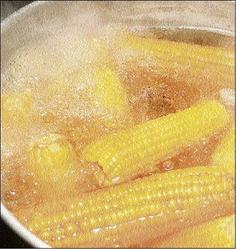
Rosalee Brown
Corn has been a part of Jamaica's cuisine for years and many of us have a love-hate relationship with corn.
For those of us who grew up in the country or visited often, you will remember planting your own corn or going to the field with your parents, fields being devastated by rodents or trespassing animals and the often not-so-pleasant experience of helping to reap the corn when you would prefer to be otherwise engaged.
There were, however, pleasant experiences of corn soup, boiled corn, roast corn and coconut, corn dumplings, corn pone, hominy, etcetera. There are more varieties of corn now available commercially and many persons who grew up on the 'firmer' variety now prefer the sweet corn as it is not only sweeter but softer.
Staple food
Corn is usually sweeter when it is freshly reaped (as are younger corns when compared to more mature ones) as the sugar content is higher in the former. Corn is a rich source of carbohydrate and 5.5 ounces have approximately 41 grams of carbs (that is, almost the same amount of carbs contained in three thin slices of bread). In the Caribbean food group system, corn is categorised as a staple food because of its significant carbohydrate content, unlike in other systems where it is categorised as a vegetable.
This is important to appreciate, as one or two ears of corn could represent the carbohydrate serving in a meal. People who are monitoring their carbohydrate intake, such as persons with diabetes, would want to note this bit of information. Corn has protein and fats and is a good source of vitamin A, carotene, folates, vitamin B1, and minerals such as potassium, phosphorus and magnesium. It also contains dietary fibre.
Corn is high in water and the water content is higher in younger corns. Corn is also a rich source of many phytonutritients. Corn can make a complete meal in combination with a legume to provide increased amounts of the amino acid, lysine, for which it contains limited amounts.
Prevents disease
Corn has the potential for improving health and helping to prevent diseases. Its high folate content makes it a good food for helping to lower levels of homocysteine in the blood which has the potential to damage blood vessels increasing the likelihood of strokes and other cardiovascular diseases. The beta carotene, such as beta-cryptoxanthin in corn, is believed to lower cancers such as lung cancers.
Corn is also a good source of the B vitamin, niacin, which is not readily available for utilisation by the body; it is however deficient in the amino acid tryptophan that can also be converted to niacin. Our fore parents are, however, very wise and have discovered that preparing the corn with lye ashes (calcium hydroxide), can release the niacin. I remember as a child travelling with my mother when she stopped at a church sister's home; I was told that they were making hominy corn and the corn was being prepared with lye ashes, it had an awful smell which I remembered for years every time I heard the word, 'hominy' until I made hominy myself and realised that I did not have to use that method. This was, however, important when corn was the staple for many persons.

Boiled corn is a local favourite.
Buying corn
Buy freshly harvested corn in husk with hair (corn silk) in place to preserve moisture.
Buy as close as possible to preparation time for the best flavour. For busy people who want to store the corn, buy the freshest ones, blanch by boiling for a few minutes then cool quickly in ice water and freeze in an air-tight bag.
Rosalee M. Brown is a registered dietitian/nutritionist who operates Integrated Nutrition and Health Services; email: yourhealth@gleanerjm.com.
